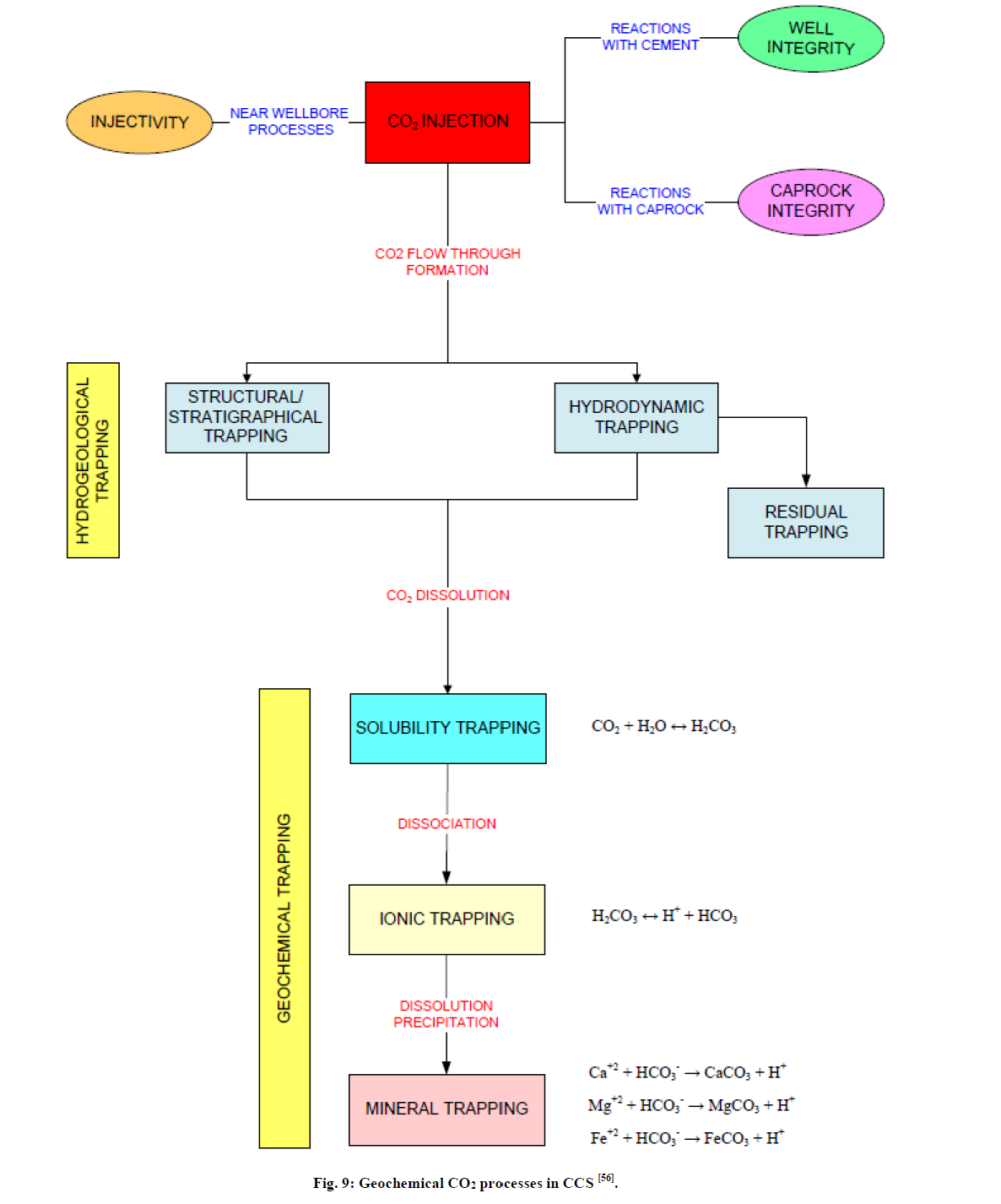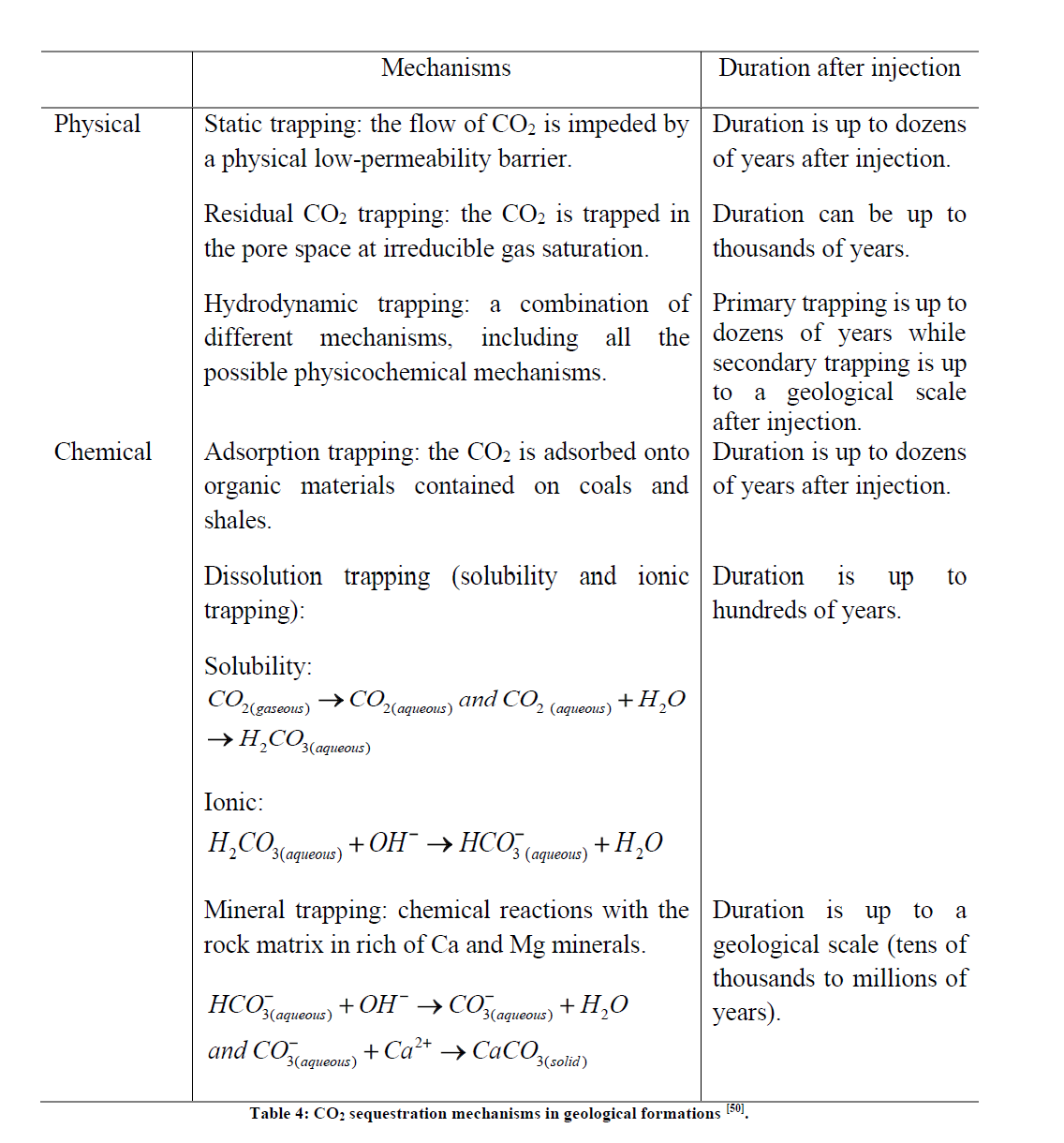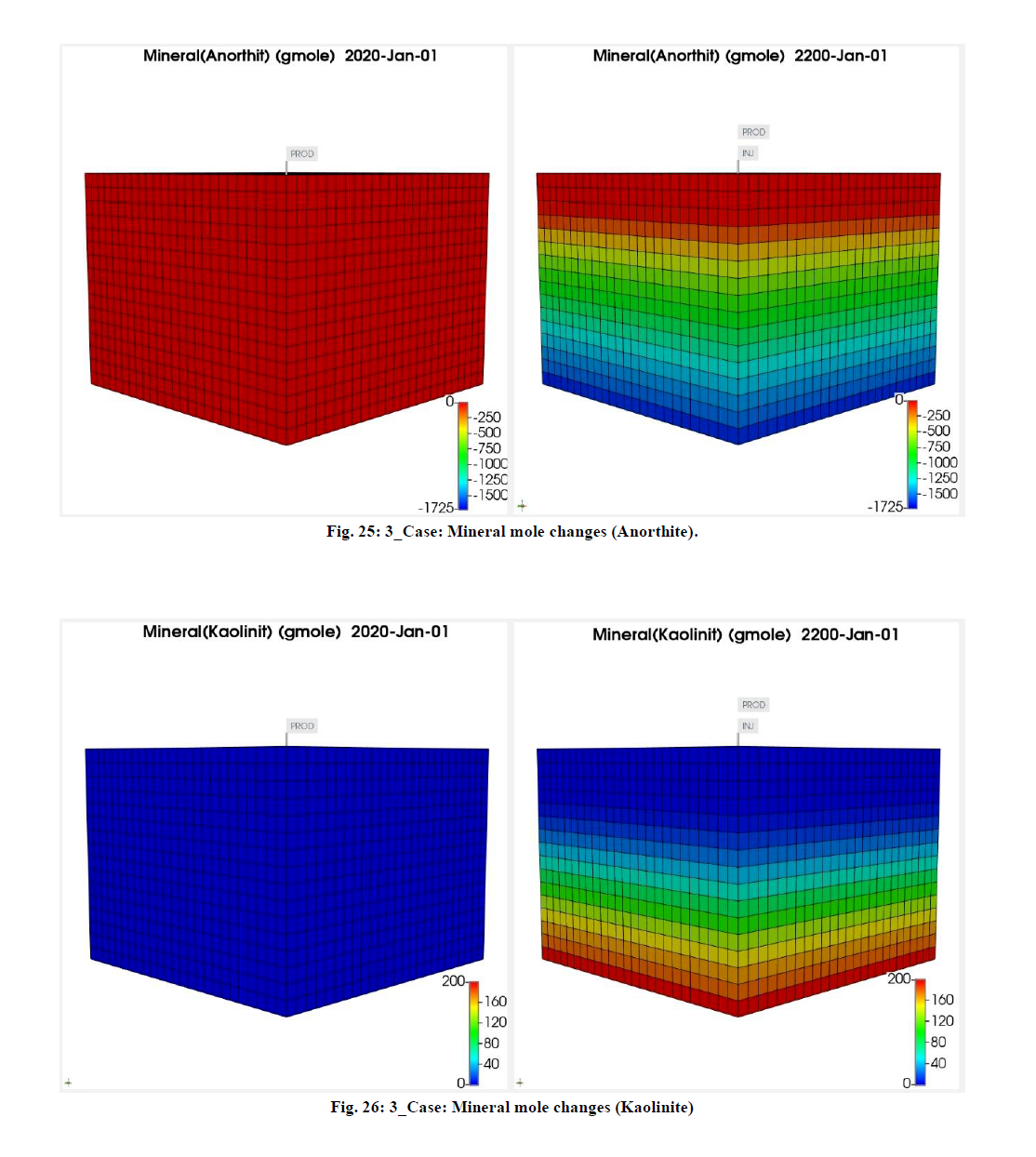碳捕获和储存(CCS)是减少人为二氧化碳排放的方法之一。深层含水层、枯竭的油气田都是潜在的储存场所,但它们所能容纳的二氧化碳数量、和地质特征的不确定性差异很大。通常,枯竭油田的容量相对有限,但在转换为储存设施之前,已经对其进行了彻底地质研究,并且已经获得了有关其地质结构和岩石性质的信息。深层含水层可能容纳大量的二氧化碳,但它们大多是未经勘探的陷阱,需要大量投资来评估其是否适合作为安全的二氧化碳储存场所。这就是为什么枯竭油田被认为是一个非常好的二氧化碳储存选项的主要原因。
沿着这条线,本文旨在研究枯竭气藏注入CO2进行地质储存过程中,模拟和量化气藏中发生的物理和化学CO2捕集机制的重要性。研究是在专门开发的商业软件的帮助下进行的,该软件用于模拟地下地层中的二氧化碳流动和地球化学反应。该软件是GEM,由计算机模拟集团提供。首先,建立了模拟目标,即研究气藏中储存的CO2的每种捕集机制对岩石-流体相互作用特性的影响。简化的储层几何形状被认为是为了避免地质构造的特定形状或分层的结果的依赖性。描述储层特征的数据主要来自文献,基于已发表的详细描述成功转化为CO2储层的储层的案例历史。
为了获得最有效的储存,选择了压力和温度条件,使CO2以超临界相保留在储层中。在生成参考模型后,模拟了两种天然气生产情景,以模拟储层枯竭。然后注入CO2。模拟时间比注入时间长得多,以便研究CO2作为自由流体、捕集流体和矿物随时间的分布变化。最初的模拟只包括构造捕集,然后在模拟中逐渐添加溶解度捕集、毛细管捕集和矿物捕集,以研究每个过程对CO2命运的影响。
研究结果不仅强调了在设计和开发二氧化碳储存项目时考虑地球化学捕集过程的重要性,还强调了哪些参数对模拟的捕集机制影响最大。当定义表征系统所需的实验室实验时,这一方面特别相关并且具有实际应用。结果证实,岩石相对矿物体积分数和相对渗透率曲线是有待确定的关键信息。此外,还发现水的蒸发对矿物沉淀的量有显著影响。具体而言,当对水蒸发进行模拟时,观察到矿物沉淀物的大幅增加,这是一个优势,因为矿物捕获被认为是最安全的捕获机制。
Fluid-flow and geochemical simulations of CO2 storage in a depleted gas reservoir: identification of the key parameters
Carbon capture and storage (CCS) is one of the methods for the reduction of anthropogenic CO2 emissions. Deep saline aquifers, and depleted oil and gas fields are all potential storage sites but they differ substantially for the quantity of CO2 they can accommodate, and for the knowledge level and uncertainties characterizing them. Typically, depleted fields have a relatively limited capacity but they have been thoroughly investigated and information about their geological structure and rock properties are already available before conversion into a storage facility. Deep aquifers are potentially able to host very large CO2 quantities but they are mostly unexplored traps and require significant investments to assess their suitability as safe CO2 storage sites. This is the main reason why depleted fields are considered a very interesting option for CO2 storage.
Along this line, this research was aimed at investigating the significance of modelling and quantifying the physical and chemical CO2 trapping mechanisms taking place in a depleted gas reservoir where CO2 is injected for geological storage.The study was carried out with the aid of a commercial software specifically developed to model the CO2 flow and the geochemical reactions in underground formations. The software is GEM, offered by the company Computer Modelling Group.
First, the simulation objectives were established, namely the investigation of the impact of each trapping mechanism of the stored CO2 in a gas reservoir as a function of the rock – fluid interaction properties. A simplified reservoir geometry was assumed to avoid dependence of the results from a specific shape or layering of the geological formation. The data for characterizing the reservoir were mainly taken from the literature, based on published case histories describing in detail reservoirs successfully converted into CO2 storages.
To have the most efficient storage, the pressure and temperature conditions were chosen so that CO2 remains in the reservoir in the supercritical phase. After generating the reference model, two gas production scenarios were simulated to mimic the reservoir depletion. Then CO2 was injected. The simulation time was much longer than the injection period so as to investigate the changes in the CO2 distribution as a free fluid, as a trapped fluid, and as a mineral over time. The initial simulations only included structural trapping, then solubility trapping, capillary trapping, and mineral trapping were progressively added in the simulations to investigate the impact of each process on the CO2 fate.
The results not only emphasized the importance of considering the geochemical trapping processes while designing and developing a CO2 storage project but also highlighted which parameters have the largest impact on the modeled trapping mechanisms. This aspect is particularly relevant and of practical application when defining the laboratory experiments needed to characterize the system. Results confirmed that the rock relative mineral volume fractions and the relative permeability curves are key information to be determined. Furthermore, it was found that water vaporization has a significant influence on the amount of mineral precipitate. Specifically, a large increase in the mineral precipitate was observed when water vaporization was modeled, which is a plus since mineral trapping is considered the safest trapping mechanism.






7.1 Conclusions
Carbon storage is a method for reducing greenhouse gas emissions. The primary issues are the long-term CO2 containment and costs.
The objective of this research was to investigate how critical it is to model, the
physical and chemical CO2 trapping mechanisms that occur in a depleted gas reservoir, where CO2 is injected for geological storage in order to predict and quantify the amount of CO2 which becomes permanently trapped. This was accomplished through the use of a commercial software specifically designed to predict CO2 flow and geochemical reactions in the formations.
Following the assumption of a simplified reservoir geometry and the generation of the reference model, two gas production scenarios were simulated to mimic reservoir depletion under pressure and temperature conditions so that CO2 remained in the supercritical phase in the reservoir. In total, 10 different models were built and simulated, with the initial simulations only including structural trapping, while the other trapping mechanisms were progressively added.
The results primarily emphasized the importance of considering geochemical trapping processes while designing and developing a CO2 storage. Second, mineral trapping seems to be significantly influenced by the process of water vaporization. When water vaporization was modeled, a major increase in mineral precipitate was seen, which is a benefit because mineral trapping is regarded the safest trapping mechanism.
Next, accurate modelling of CO2 solubility in brine is important because of the substantial amounts of trapped CO2 in brine. CO2 solubility in brine is a function of temperature, pressure and salinity, and by comparing 3 available models (also implemented in the software), it was seen that even though the temperature was constant and uniform, the solubility varied between the models.
As a result, accurate laboratory experiments to define mineralogy and brine are particularly relevant to fully characterize the system.Moreover, relative permeability hysteresis has been shown to have a significant influence on CO2 inventory, and is thus regarded as one of the crucial information to be identified.
